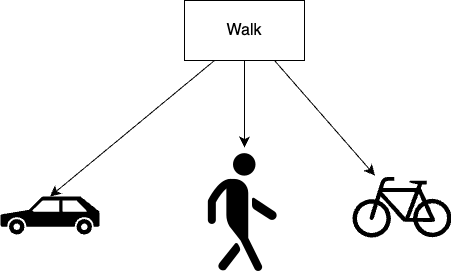In the intricate landscape of software design, the Strategy Design Pattern emerges as a beacon of adaptability and elegance. This design paradigm, nestled within the realm of behavioral patterns, provides a systematic blueprint for encapsulating algorithms in interchangeable modules, empowering developers to navigate the dynamic evolution of software requirements with finesse. By fostering flexibility, modularity, and readability, the Strategy Pattern not only simplifies the implementation of varying behaviors but also resonates with a tangible real-world analogy, making its concepts intuitive and relatable. This introductory paragraph sets the stage for a deeper exploration of how the Strategy Design Pattern proves to be a fundamental tool, offering a structured approach to building scalable and maintainable software architectures.
Table of Contents
What?
The strategy design pattern is a behavioural design pattern that enables you to define a family of interchangeable algorithms or strategies and encapsulate each one as an object
Code
# Strategy Interface
class SortingStrategy:
def sort(self, data):
pass
# Concrete Strategies
class BubbleSort(SortingStrategy):
def sort(self, data):
print("BubbleSort: Sorting data using bubble sort")
# Implementation of bubble sort
return sorted(data)
class QuickSort(SortingStrategy):
def sort(self, data):
print("QuickSort: Sorting data using quick sort")
# Implementation of quick sort
return sorted(data, key=lambda x: x)
# Context
class SortingContext:
def __init__(self, strategy):
self.strategy = strategy
def set_strategy(self, strategy):
self.strategy = strategy
def execute_sort(self, data):
return self.strategy.sort(data)
# Example Usage
if __name__ == "__main__":
# Create sorting strategies
bubble_sort = BubbleSort()
quick_sort = QuickSort()
# Create a sorting context with the bubble sort strategy
sorting_context = SortingContext(bubble_sort)
# Perform sorting using the current strategy (bubble sort)
data_to_sort = [3, 1, 4, 1, 5, 9, 2, 6, 5, 3, 5]
sorted_data = sorting_context.execute_sort(data_to_sort)
print("Sorted Data:", sorted_data)
# Change the sorting strategy to quick sort
sorting_context.set_strategy(quick_sort)
# Perform sorting using the new strategy (quick sort)
sorted_data_quick = sorting_context.execute_sort(data_to_sort)
print("Sorted Data with QuickSort:", sorted_data_quick)
Real-World Analogy

Consider a transportation system within a city. The goal is to efficiently move people from one point to another, and there are various modes of transportation available, each with its own strategy
- Walking
- Bicycling
- Car
- Bus
Use Case of the Strategy Design Pattern
The Strategy Pattern is widely used in various software development scenarios. Some notable applications include:
- User Interface Frameworks:
In graphical user interface frameworks, the Strategy Pattern is employed for handling different user interactions, such as mouse clicks or keyboard input. - Compression Algorithms:
Compression utilities often use the Strategy Pattern to support multiple compression algorithms, allowing users to choose the one that best fits their needs. - Payment Processing Systems:
Payment processing systems can utilize the Strategy Pattern to handle various payment methods, each implemented as a separate strategy.
Benefits of the Strategy Design Pattern
The Strategy Design Pattern is employed in software development for several compelling reasons, each contributing to the overall effectiveness and efficiency of a codebase. Here are some key reasons why this pattern is widely embraced:
- Flexibility and Adaptability:
The primary motivation behind the Strategy Pattern is to provide a mechanism for dynamically changing algorithms or behaviours at runtime. This flexibility is crucial when dealing with varying requirements or when the behaviour of a system needs to be altered without modifying its context. By encapsulating algorithms in separate strategy classes, the system becomes highly adaptable and capable of accommodating changes without requiring extensive modifications. - Encapsulation and Separation of Concerns:
The Strategy Pattern encourages the encapsulation of individual algorithms into their own classes. This separation of concerns enhances code modularity, making it easier to understand, maintain, and extend. Each strategy class focuses on a specific algorithm, isolating its implementation details from the rest of the system. This promotes a clean and organized code structure. - Code Reusability:
Concrete strategies, representing specific algorithmic implementations, can be reused in different contexts. This reusability is advantageous when dealing with similar behaviours across various parts of an application. Developers can leverage existing strategies without duplicating code, fostering a more efficient and maintainable codebase. - Readability and Understandability:
The Strategy Pattern improves code readability by providing a clear structure for algorithm implementations. Developers can easily identify and comprehend the behaviour of each strategy without delving into the complexities of the overall system. This clarity simplifies the process of modifying or adding new strategies, as the context that uses them remains relatively unaffected. - Easy Testing and Debugging:
Isolating algorithms in separate strategy classes facilitates unit testing. Strategies can be tested independently, ensuring that each algorithm functions correctly. Debugging becomes more straightforward as issues related to a specific algorithm can be traced within its dedicated class, rather than navigating through a complex and interconnected system. - Promoting Open-Closed Principle:
The Strategy Pattern aligns with the Open-Closed Principle, one of the SOLID principles of object-oriented design. According to this principle, a class should be open for extension but closed for modification. By encapsulating algorithms in separate classes, new strategies can be added without altering existing code, adhering to the principle and promoting a more robust and scalable architecture.
Conclusion
The Strategy Design Pattern is a pivotal asset in software development, providing a systematic approach to handling diverse algorithms and behaviors. By encapsulating strategies in separate classes and allowing dynamic interchangeability, the pattern fosters adaptability, code modularity, and readability. Its real-world analogy, akin to choosing transportation strategies based on specific needs, resonates with developers, making the concept intuitive. With a focus on flexibility, maintainability, and adherence to the Open-Closed Principle, the Strategy Pattern emerges as a versatile and effective solution for creating robust and scalable software architectures in the face of evolving requirements.
Resources
For further exploration, make sure to check out these helpful resources: